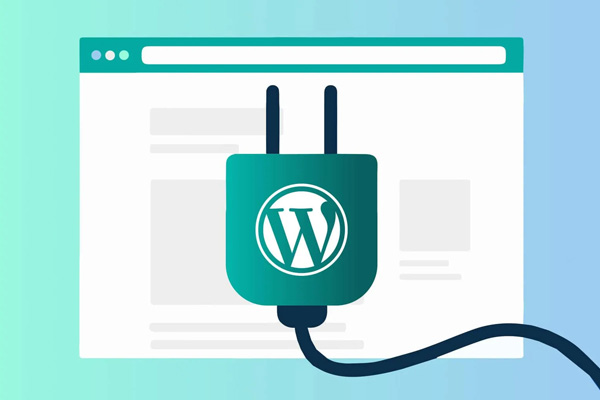
Embarking on how to build an ecommerce website starts with the right guidance. This no-frills guide will lead you through essential steps—selecting a powerful platform, securing a memorable domain, optimising for users, and ensuring safe transactions as well.
With crisp, clear directions, get ready to launch an ecommerce website that stands out in the bustling online marketplace. Irish entrepreneurs are leveraging the Online Trading Voucher scheme to enhance their digital presence and expand their business horizons.
Table Of Contents
Key Takeaways
- An ecommerce website provides a global storefront with significant cost savings and scalability compared to traditional retail, offers 24/7 customer convenience, and leverages digital platforms for easier logistics management.
- Selecting the right ecommerce platform is essential, with considerations for hosting solutions, built-in features like mobile optimisation and API integration, and choosing a memorable and brand-consistent domain name.
- A successful ecommerce website launch involves rigorous testing, including quality assurance and beta testing, followed by a comprehensive marketing strategy utilising SEO, Google Ads, social media and email campaigns to drive traffic and engagement.
Why Create An Ecommerce Website?

An ecommerce website operates as an around-the-clock digital retail space without the limitations of a physical location, effectively minimising fixed costs. Its online footprint affords access to customers across the globe, broadening your market reach beyond local boundaries and streamlining the purchasing process for buyers.
Transitioning to an online business model from traditional retail is a strategic move for entrepreneurs, leveraging advantages such as lower startup costs, reduced operational expenses, and the ease of reaching a wider market with customisable online store themes.
Ecommerce platforms bestow multiple advantages on companies, such as:
- The capability to scale operations with no necessity for expanding physical premises.
- Simplified monitoring of sales and logistical operations through electronic records.
- The option to delegate delivery logistics management allows more time to enhance products, marketing strategies, and customer relations.
Businesses and consumers both enjoy several perks from ecommerce websites. These virtual marketplaces facilitate:
- Cost-efficient promotion and advertising methods.
- Continuous availability for consumer purchases.
- A diversity in shipping options
- Effortless comparison shopping experiences
Selecting the appropriate platform can pave the way toward unlimited expansion and prosperity for your business.
Find A Developer
If you’re not well-versed in technology, the thought of setting up a flourishing ecommerce website can be daunting. But this hurdle can be overcome by hiring a developer, who will streamline and accelerate the construction of your online store while ensuring it meets all your unique requirements and ambitions and integrating modern web design trends.
At Baldwin Digital, we have ecommerce developers with comprehensive skills that span across front-end and back-end development, crafting mobile-friendly designs, along with expertise in SEO optimisation—essential elements for launching a successful online store.
Identifying The Ideal Ecommerce Platform For Your Online Store
Choosing the appropriate ecommerce platform is crucial especially for SEO, as it forms the foundation of your ecommerce store and can greatly influence the success of your enterprise. The best-suited online store builder needs to offer adaptability, growth potential, and substantial support resources to efficiently manage and expand your ecommerce business.
It’s equally vital to evaluate the return on investment provided by each platform since their impact on your business’s financial performance can vary significantly. We recommend with WordPress/WooCommerce or Shopify.
Comparing Top Ecommerce Website Builders

Selecting an ecommerce platform requires evaluating numerous leading options. Shopify stands out as a comprehensive which hosts various apps such as review apps, fully hosted ecommerce solution known for its swift setup and ability to process large volumes of transactions seamlessly. It’s particularly suited for businesses eager to quickly deploy a reliable and user-friendly online retail presence.
Conversely, WooCommerce presents itself as an open-source plugin tailored for WordPress sites that delivers boundless customisation possibilities. Not only is it free to initiate, but its codebase also undergoes routine security checks by professionals in the field. If you’re looking to add ecommerce capabilities to your existing WordPress site, WooCommerce could be just what you need. In addition to this, you can also install a cache plugin to help with loading times of your WordPress site.
For those beginning their web journey or able who are ready to redesign from the ground up with e-commerce at their core, Magento offers another self-hosted choice filled with a plethora of features and integrations dedicated toward immediate purchase facilitation and product recommendations – yet keep in mind this robust system typically calls for building your website on Magento right from the outset due to the extensive nature of this powerful eCommerce solution.
Hosting Solutions For Ecommerce Sites
Selecting a suitable web hosting solution is an essential step after choosing your ecommerce platform, as the costs are influenced by the size and specific needs of your online store. Above all else, it’s important to prioritise reliability in web hosting to ensure that your ecommerce website remains accessible 24/7, thereby sustaining consumer confidence.
Various methods exist for hosting ecommerce websites including shared hosting, Virtual Private Servers (VPS), dedicated servers or cloud-based solutions.
To build the best ecommerce site possible, consider using our dedicated services from which not only provide reliable hosting but also offer additional tools tailored for marketing efforts, search engine optimization or like it’s spelt in Ireland, search engine optimisation (SEO) and fast loading times, all designed to optimise an online store’s performance.
Ultimately, selecting the most appropriate web host should align with both business objectives and financial considerations.
Essential Features Your Ecommerce Platform Must Have
It’s imperative to have a sturdy, dependable ecommerce platform that is rich in features for your online store. Mobile optimisation stands out as one of the critical functionalities you must offer. Considering the extensive number of shoppers using mobile devices, ensuring that your ecommerce site is optimised for these users is non-negotiable.
Equally important is the API integration capability on your chosen platform. A robust selection of APIs not only allows you to craft distinct selling experiences, but also ensures smooth interaction with a range of external tools and systems necessary for maintaining business adaptability and achieving customer satisfaction. A regulation known as SCA, or Strong Customer Authentication, came into force in September 2019.
Finally, streamlining the checkout process can significantly improve user experience. Providing options such as social media logins enables quicker transactions by reducing time spent during purchase completion on your ecommerce site.
Crafting Your Online Store’s Domain Name
Selecting a suitable domain name is crucial when establishing your online store because it serves not only as the virtual address for your shop but also plays a pivotal role in shaping its brand identity.
Opting for a domain name that is memorable, simple to spell, and indicative of what your online store offers can help distinguish it from competitors and ensure it resonates with consumers.
The Art Of Choosing A Memorable Domain
Opting for a short and straightforward domain name is crucial. It’s recommended to keep it within the 6-14 character limit, which aids in easy memory retention and typing proficiency. Steer clear of including hyphens and numbers as they are often sources of mistyping and misunderstandings.
To maintain uniformity in your brand image, align your domain name with your social media handles and overall branding strategy. Your chosen domain should reflect your brand identity, evoke the right emotional response from consumers, and encapsulate all that you offer in terms of products or services.
Securing Your Domain Name
Once you’ve decided on a domain name, it’s essential to make sure that it is available and hasn’t been claimed by someone else. Also, check that the domain isn’t infringing on any trademarks which could lead to legal complications in the future.
When selecting your domain extension, aim for a .com if at all possible because of its well-regarded reputation and sense of reliability especially when you sell worldwide, likewise if you sell your products and services only in Ireland, then we recommend using a .ie domain extension. Should .com and .ie be taken, other top-level domains (TLDs) such as .co, .org or .shop are good alternatives.
If your chosen Content Management System (CMS) doesn’t provide registration services for domains, then utilise a separate domain name registrar to secure your selected name without delay—this will ensure no one else can register it first. At Baldwin Digital, we can arrange all the above for you and even manage the annual renewals.
Designing Your Ecommerce Website For Optimal User Experience
Now that you’ve selected a platform and secured a domain name, you’re set to embark on an exciting journey – it’s the phase where you build an ecommerce website. Emphasising ecommerce website design is crucial in ensuring an exceptional user experience and attracting the right market.
The focus is on crafting a visually attractive, intuitive, and user-friendly website design for your ecommerce site, incorporating responsive design, and utilising pre-made themes or custom templates to convey your brand’s message effectively.
Pick Your Ecommerce Theme
The foundation of your web design for an e-commerce site is the choice of theme. Pre-made templates, or themes, offer a streamlined and budget-friendly option over bespoke web design for setting up an online store. Key features to consider when selecting a theme include:
- A layout that adapts responsively
- Effective product page layouts
- Shopping carts that update automatically
- Optimisation for mobile devices
- Optimised for SEO
Opting for an overly common theme can lead to your website bearing resemblance to those of competitors. Thus, assess the potential for customisation carefully. Many themes come equipped with automatic updates which ensure they stay current with evolving design aesthetics and technological advancements without requiring manual updates.
Layout & Navigation Best Practices
For an ecommerce website, having a thoughtful design and user-friendly navigation is essential. By optimising the navigation of an ecommerce site, users are better able to achieve their objectives on the platform, which can lead to increased conversion rates and bigger shopping cart values.
Uniformity in navigational design throughout all web pages enhances familiarity with the site and enriches the overall experience for visitors.
Employing horizontal or dropdown menus enables consumers to effortlessly find key sections and product categories within your online store. The footer area serves as a resourceful space for links that offer value-added information such as Frequently Asked Questions (FAQs) and social media profiles.
Periodic audits are instrumental in maintaining seamless site traversal by locating errors like broken pages or non-functional links, while also ensuring that navigating through your website remains accessible on mobile devices.
Visual Branding & Aesthetics

Engaging users and bolstering brand recognition hinges on visual branding and aesthetics. Your ecommerce theme should incorporate unique brand elements such as customised fonts, color schemes, and impactful imagery on the homepage. The About Us page is a crucial component of visual branding, as it allows customers to learn about the brand’s story and its core values.
High-quality images on your website can influence customer perception and reinforce the brand’s reputation. Visual testing helps to identify and correct design inconsistencies, ensuring the ecommerce site meets aesthetic and usability standards.
Responsive Design For Mobile Devices
In today’s mobile-dominated landscape, it is crucial to have a responsive design for your website that caters well to mobile devices. This ensures an online store is able to provide smooth navigation and functionality across different types of devices, thus improving the shopping experience for users who shop on-the-go.
To attract and retain consumers who prefer shopping through their smartphones, regular updates are essential to enhance the site’s performance on mobile platforms.
By effectively balancing high-quality imagery with optimised file sizes using appropriate image compression techniques, you can expedite page load times while preserving visual appeal—this balance is key in delivering a seamless browsing experience for those accessing your online store via mobile devices.
Developing Your Product Pages
Once the layout and design of your online store have been perfected, the next crucial phase is to develop your product pages. These pages are critical in swaying your customers’ buying choices and must be designed with great attention to detail.
Writing Engaging Product Descriptions
Product descriptions are pivotal in swaying a customer’s purchasing choice. They need to detail essential information regarding the product, including:
- Its practicality
- Available colors
- Varieties of textures
- Dimension specifics
- Overall worth
These descriptions should assist search engine algorithms with cataloging web pages, which enhances SEO performance.
To craft an impactful and compelling product description, address your ideal consumer directly by employing terminology and phrasing that aligns with their desires and requirements. Focus on clearly illustrating the distinctive advantages and delights each item provides by demonstrating how its attributes can remedy issues or enhance the buyer’s lifestyle.
High-Quality Images & Media

The adage that a picture speaks volumes is particularly applicable to your product pages. Utilising high-resolution imagery can convey the inherent quality and value of your items, ensuring they capture attention and appeal effectively to potential buyers.
In order to give customers a thorough appreciation of what you’re offering, it’s essential to incorporate comprehensive visuals such as 360-degree shots and promotional videos. Presenting products from various viewpoints aids in providing clarity about their dimensions, style, and how they operate.
Boosting the visual display on product listings with crisp images along with interactive elements has been shown to enhance user engagement as well as elevate sales figures by approximately 30%.
Organising Products Into Categories
Optimising product categorisation on an ecommerce website can significantly bolster searchability and elevate the overall user experience. Customers benefit from this meticulous organisation as it allows them to effortlessly locate items, filter selections by brand or price bracket, and proceed seamlessly along their desired purchasing journey.
For international sellers, those handling numerous brands, or businesses catering to diverse consumer demographics, the ability to operate multiple storefronts is a crucial capability of any ecommerce platform. Particularly for entities with brick-and-mortar establishments, multi-storefront features are vital in preserving uniformity in branding across various sales channels.
Integrating Secure Payment Gateways
Before launching your ecommerce website for customer access, it is essential to set up secure payment gateways. This step is pivotal in building trust with your clientele and guaranteeing seamless transaction processes.
Selecting Payment Options For Your Target Audience
Offering a variety of payment methods, such as Stripe, PayPal, Revolut and bank transfers, can address various customer preferences and improve the chances that they will finalise their purchases. By embracing a broad spectrum of payment options, businesses can boost convenience for customers, which may lead to higher conversion rates.
To streamline the checkout experience and bolster user satisfaction Implementing one-click purchasing is beneficial. This functionality allows repeat customers to complete transactions faster by bypassing the step of re-entering their details during each purchase.
Ensuring Payment Security & Trust
Ensuring the security of your payment gateways is essential not only for safeguarding your enterprise, but also for fostering trust among consumers. By underscoring data protection during transactions, secure payment gateways play a pivotal role in establishing customer confidence.
Visual indicators such as SSL certificates and recognisable payment badges offer customers immediate comfort, signaling that their financial transactions are protected, which aids them in deciding to finalise their purchases. It is imperative to encrypt all data thoroughly to preserve both the integrity of the business-customer relationship and their mutual trust.
Streamlining The Checkout Process
Ensuring the checkout process is streamlined and effortless is essential as it marks the final stage before a customer completes their purchase. Simplifying this process can significantly decrease instances of cart abandonment while simultaneously boosting conversion rates.
Reducing Checkout Steps
The checkout experience should be straightforward and efficient. By giving users the option to bypass compulsory account registration until after they have made their purchase, you enable a quicker transaction by allowing them to set up a password post-purchase if they choose.
Minimising the required fields for payment and delivery details during the checkout process streamlines online shopping, making payment processing less cumbersome. For returning customers, implementing a system that recalls and auto-populates previously entered information can cut down on redundant data input steps.
Offering Guest Checkout Options
Some customers may not be interested in setting up an account just to complete a purchase. By providing the option for guest checkout, you cater to those who wish to bypass account creation, thereby eliminating an obstacle that could hinder the finalisation of their transaction.
Providing a guest checkout feature allows businesses to:
- Minimise delays associated with obligatory account sign-ups
- Increase the chances of converting browsing into actual sales
- Deliver a more seamless and pleasant buying journey for shoppers.
Setting Up Shipping & Fulfillment Strategies
After a sale has occurred, attention turns to executing the order and ensuring that the product reaches the customer. Establishing efficient strategies for shipping and fulfillment is essential in providing a smooth delivery process, which significantly influences your levels of customer satisfaction and retention.
Crafting A Clear Shipping Policy

The shipping policy must unequivocally detail the selected rates and methods of delivery, including options like complimentary delivery, uniform pricing, or carrier-specific dynamic pricing that will influence anticipated customer costs. It should offer projections of delivery times so customers can gauge when they might receive their purchases.
Equally vital is the need to clearly tackle typical queries regarding methods of shipment, processing durations as well as any restrictions tied to location or items in a format that’s easy for consumers to digest. International clients ought to be advised within this policy about potential extra charges from customs which could affect their orders.
Automating The Fulfillment Process
The intricacies of order fulfillment encompass the tasks of selecting, packaging, and dispatching items. By automating these steps, significant time and labor can be conserved, granting you the opportunity to dedicate greater resources to your business expansion.
On one side lies dropshipping—a model that circumvents the necessity for personal inventory management through an automated system of fulfilling orders. Conversely, employing fulfillment centers streamlines automation in aspects such as product picking, packing and distribution, which can translate into lower shipping costs and faster delivery times for businesses.
Launching Your Ecommerce Site With Rigorous Testing
It is essential that once you have your online store ready, complete with products and having integrated payment gateways along with shipping methodologies, to conduct a comprehensive testing of the entire system prior to its formal unveiling. This will confirm the proper functioning of all aspects of the website and prevent any possible disruption or customer attrition stemming from technical glitches.
Quality Assurance Checks
Ensuring that an ecommerce website is fully operational before its launch, thorough quality assurance evaluations are imperative. It’s essential to rigorously examine navigation menus and hyperlinks to guarantee users can smoothly transition to the intended pages without encountering any faulty or misdirected links.
For forms and input areas, it’s important that there is accurate flagging of mandatory fields along with providing precise error prompts detailing how users can rectify their entries. To maintain a uniform user experience throughout, the ecommerce site must be subject to extensive compatibility assessments on different operating systems, devices, and web browsers.
Beta Testing With Real Users
Prior to the public debut of your ecommerce website, it’s prudent to implement a beta test involving actual users. This stage enables you to evaluate both how well your site functions and its ease of use in real-world contexts ahead of the grand opening.
To achieve meaningful feedback that truly resonates with what your customers will experience, seek out beta testers who are representative of your target audience in aspects like demographic characteristics, behaviors, and preferences.
Set up clear avenues for these testers to provide their input—this could include conducting surveys, offering feedback forms or creating user forums so they can share detailed responses about their experiences.
Upon gathering this information from beta testing participants, examine the data thoroughly for any recurring issues or significant concerns. Doing this allows you to rank problems according to urgency and make knowledgeable choices regarding which adjustments should be made before you launch the website officially.
Marketing Your New Online Store
With the shift towards digital retail and the growing trend of shopping online, launching an online store has become a pivotal step for businesses aiming to tap into the expanding ecommerce market. As you prepare to launch your online store, it’s crucial to devise an extensive digital marketing plan.
This strategy should be designed to attract potential customers, catering to their growing preference for the convenience of shopping online, and may encompass a range of techniques such as search engine optimisation (SEO) to drive traffic, actively engaging with audiences on social media platforms, and implementing email marketing campaigns.
Utilising SEO To Drive Traffic
Optimising your new ecommerce website for search engines is a critical strategy to attract visitors. By integrating long-tail keywords that align with precise customer searches, you enhance the likelihood of conversions since these terms cater to more targeted queries.
Incorporating schema markups on your ecommerce site clarifies its content for search engines, which can generate rich snippets. These detailed previews in search results are capable of improving click-through rates significantly.
Choosing a domain name that contains pertinent keywords can bolster the SEO of an ecommerce platform, thereby increasing its visibility among potential customers who are conducting searches related to those terms.
Utilising Google Ads
Google is the most popular search engine. Ads stands as a robust instrument for your marketing strategy, utilising a pay-per-click system that ensures advertisers are charged only upon receiving a click on their advertisement. The platform provides targeting capabilities that enable the tailoring of ads to reach specific audiences.
- Keywords
- Demographic groups
- Geographic locations
- User interests
The service presents an array of advertising formats suited to diverse promotional needs and tactics, including:
- Search Ads
- Display Ads
- Shopping Ads
- Video Ads
To leverage Local Services Adseffectively, it is essential to define precise business objectives and set clear marketing goals. Crafting a successful Google search engine. Ads campaigns involve carefully choosing appropriate keywords, establishing key performance indicators (KPIs), and meticulous budget planning.
Leveraging Social Media & Email Marketing
In today’s digital landscape, leveraging the strengths of social media and email marketing can substantially increase your online store’s visibility. Adapting website content for use on social platforms, engaging in social listening to understand consumer needs, and employing these channels for customer support can exponentially broaden your ecommerce business’s audience.
Conversely, email marketing offers an exceptional channel for maintaining relationships with your clientele. By developing a robust strategy for email marketing and focusing on expanding an active subscriber base, you have the potential to boost both engagement with customers and sales outcomes through well-timed and pertinent emails.
Maintaining & Growing Your Ecommerce Business
After launching your ecommerce website, the journey is hardly complete. The next step involves sustaining and growing your ecommerce business by regularly updating, perpetually optimising, and steadily enhancing the customer experience through consistent efforts.
Regularly Updating Your Site
To ensure the success of an ecommerce website, it is essential to frequently refresh its content and features to stay relevant and keep users interested. Routinely fixing broken links is crucial for improving both user experience and the performance of the website.
It’s vital that businesses keep their content up-to-date with accurate pricing information as this fosters trust among customers and allows companies to remain competitive within their industry. For expanding enterprises, choosing a platform that can scale effectively, manage increased traffic seamlessly, and integrate new technological capabilities is an important factor in sustaining growth.
Analysing Performance & Customer Feedback
Receiving feedback is akin to the champions’ morning meal. Insightful analysis into your online store’s robust points and potential enhancement areas can be gleaned from examining performance metrics and customer opinions.
Employing analytics tools such as Google Analytics sheds light on typical user journeys, offering valuable knowledge for refining website navigation and improving the overall shopping journey.
Analysing the results of marketing efforts using analytics instruments helps in gleaning lessons from previous business choices, enabling constant progression in marketing tactics. Bear in mind that ongoing learning and improvement are essential to growth.
Summary
To sum up, the path to creating a thriving online store is paved with both promising prospects and hurdles, and don’t forget to make sure your website is GDPR compliant. This adventure requires meticulous strategising, selecting an apt platform, designing an inviting interface, formulating captivating product pages, incorporating trustworthy payment gateways, simplifying the checkout experience and deploying potent marketing tactics.
By adopting a diligent method and maintaining ongoing dedication, you have the potential to establish not just any ecommerce website but one that achieves your business goals while delivering a superior customer shopping experience. Are you prepared for this fulfilling endeavor?
Frequently Asked Questions
What is an ecommerce platform?
A software application known as an ecommerce platform is engineered to assist online businesses in administering their website, sales, and operational activities.
Why is a domain name important?
A domain name holds significance beyond merely serving as an address. It is an integral component of your brand identity that enables your online store to distinguish itself and remain memorable in the minds of consumers.
What is the role of SEO in an ecommerce website?
Incorporating specific keywords into the content of an ecommerce website is crucial for SEO, as it enhances visibility on search engines. This improved online presence can lead to a surge in traffic and elevate conversion rates.
What is a payment gateway?
A payment processor relies on a payment gateway to safely encrypt and convey credit card information, which is essential for fostering trust with customers and facilitating seamless transactions.
Why is it important to regularly update an ecommerce website?
It is essential to consistently refresh the content and functionality of an ecommerce website, ensuring it remains pertinent and engaging for users while improving site performance through fixing any broken links and upgrading the overall user experience. Software updates to themes and plugins should also be carried out regularly to keep the site as secure as possible.



